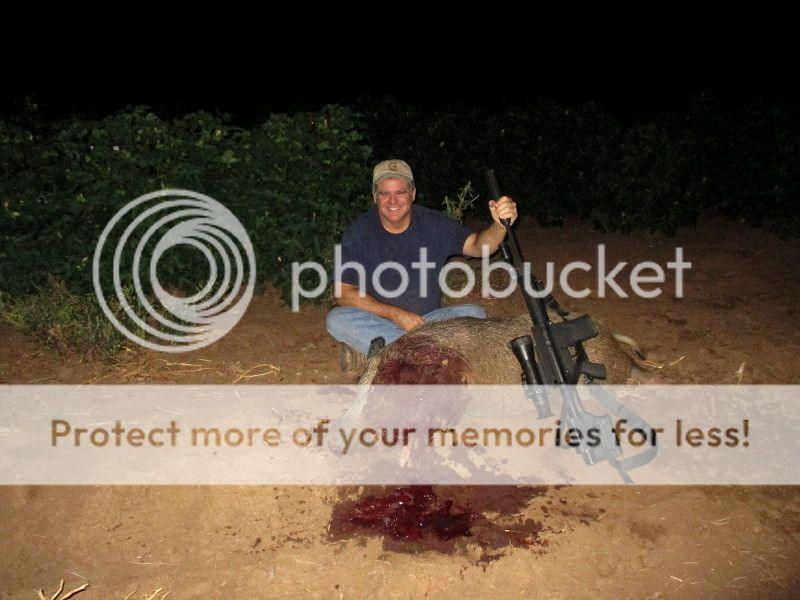Double Naught Spy
Well-Known Member
I posted that I was testing a new scope for a local vendor (http://www.longrangehunting.com/forums/f18/new-armasight-predator-thermal-158437/) and now the testing has moved to application.
We out last night in hopes of encountering a sounder that is occasionally running through my client's property. I had plans to stay until dawn to get them, but was surprised during my hike into the stand to spy a big old boar at a distant feeder in broad daylight. I trekked up a hill to get into a reasonable firing position on it at 125 yards, but stayed low so that he would not see me, and I set up with the tripod from a seated position. As I started to look through the scope, I have having trouble making out the hog. Something wasn't right. Then he turned and I got my shot.
Turns out, I was sighting and shooting through a lot of grass (blue stem and other vegetation) and that plants were heated up from being in the sun all day. This distorted the image.
Many hours later, in the stand, I got a crack at another hog. It was smaller and more distant, but without the vegetation in the way, it was a very reasonable shot with the budget-level Armasight Predator thermal weapon sight. The hog went down, DRT.
I will have this sight for a few more hunts to assess it fully, but right now, it definitely looks like it is a hunter!
[ame]https://youtu.be/i2ucCWwFM5s[/ame]
We out last night in hopes of encountering a sounder that is occasionally running through my client's property. I had plans to stay until dawn to get them, but was surprised during my hike into the stand to spy a big old boar at a distant feeder in broad daylight. I trekked up a hill to get into a reasonable firing position on it at 125 yards, but stayed low so that he would not see me, and I set up with the tripod from a seated position. As I started to look through the scope, I have having trouble making out the hog. Something wasn't right. Then he turned and I got my shot.
Turns out, I was sighting and shooting through a lot of grass (blue stem and other vegetation) and that plants were heated up from being in the sun all day. This distorted the image.
Many hours later, in the stand, I got a crack at another hog. It was smaller and more distant, but without the vegetation in the way, it was a very reasonable shot with the budget-level Armasight Predator thermal weapon sight. The hog went down, DRT.
I will have this sight for a few more hunts to assess it fully, but right now, it definitely looks like it is a hunter!
[ame]https://youtu.be/i2ucCWwFM5s[/ame]



